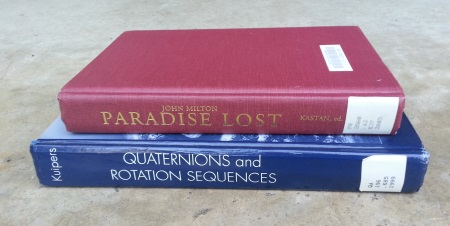Most people have heard of the Six degrees of separation.
I am wondering how to adapt that to scope?
Reasoning that when I find that a particular author uses the term “list washing” as an alternative way to identify “record linkage,” I should scope that term by that author.
Assuming that author has co-authors, those authors should be used as scopes on that term as well.
That seems straight forward enough but then it occurred to me that anyone who either cites that article or one of those authors, is probably using the same term to identify the same subject. So I need to extend the scope to include those authors as well.
You can see where this is going.
But unlike the usual citation network, this is tracing at a more fine grained level the identification of subjects, which isn’t necessarily co-extensive with citation of an article.
If a legal analogy would help, courts cite prior decisions for all sorts of reasons and being able to identify the ones that are important to your case would save enormous amounts of time. Remembering that even in hard times top firms charge anywhere from $300 to $750/hour, saving time can be important.*
Thinking about it visually, imagine a citation network, those are common enough, but where you can lift out a set of connections based on the usage of a particular term to identify a subject.
Add merging of the different identifications and it starts to sound like a game, with scores, etc., to tease apart citation networks into references to particular subjects, even though the authors use different terminology.
*****
*Public access to legal material projects should note that court opinions exhibit the same behavior. If a court in Case1 cites Case2 for a jurisdictional issue, it is likely that any other case citing Case1 and Case2, is also citing Case2 for a jurisdictional issue. Old law clerk trick. Not always true but true often enough to get a lot of mileage out of one identification of why a case was cited.
